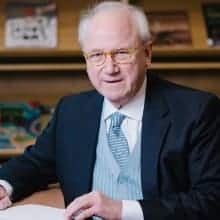
Springfield, MA – Massachusetts, the state where the first public high school opened in 1820 and the “common school’’ movement began in the 1830s, has ranked first in NAEP scores over seven consecutive tests since 2005. The Kids Count Data Center placed Massachusetts first in 2017, second in 2018, on overall preK-12 education indicators.
Why, then, is Massachusetts in a period of self-examination? Its landmark 1993 schools funding-and-standards law has lost its energy, with policy makers now worrying about students left behind and seeking the next burst of momentum.
I spent three days last week in Springfield, a western Massachusetts city of 155,000 founded more than a century before the American Revolution. I traveled here to take part in a gathering of Columbia graduate school classmates, hosted by my friend George Arwady, publisher of the Springfield Republican newspaper. While here, I also conducted interviews to explore what can North Carolina learn from what Massachusetts has accomplished and is now attempting.
It is difficult, of course, to draw exact parallels between states with different political and civic histories. North Carolina, with 100 counties and 115 public school districts, features countywide school districts. Massachusetts has 406 districts, mostly defined by cities and towns. In Massachusetts, teachers and principals have a long legacy of unionization, while North Carolina teachers have a statewide association that lobbies, but no formal bargaining power.
Under its 1993 initiative, Massachusetts allocated state funding according to a formula based on local needs and tax capacity. The law also provided for new curricula and an aligned test, known here as MCAS.
Since 1993, said Daniel J. Warwick, superintendent of Springfield Schools, Massachusetts adopted “clearly the most challenging accountability system in the country…The only way to teach to this test is to provide exceptional instruction, including high-order thinking skills.”
But now the state has one of the nation’s widest achievement gaps and segregation has expanded into a defining divide between city and suburban schools. The state has set in motion an updating of MCAS, while debate proceeds over revising the funding formula.
“People are shocked by that (achievement gap) because we are so high-performing,” said Mary E. Walachy, executive director of the Springfield-focused Irene and George Davis Foundation. High-performance, she said, “is true except for brown and black and poor kids.”
The 1993 act got a booster shot in 2010 with a law opened the way, among other initiatives, for state take-over of low-performing districts. Currently, the schools in Holyoke, a city of 40,000 eight miles north of Springfield, are in state receivership.
In Springfield schools, Hispanic students (largely Puerto Rican) constitute 67 percent of total enrollment, black students 20 percent, and whites and Asians about 13 percent. Eighty percent of Holyoke students are Hispanics, 20 percent whites.
Stephen Zrike, the receiver/superintendent of Holyoke Public Schools, and Erin Linville, chief of strategy in Holyoke, have emphasized the leadership of principals and a “professional compensation structure’’ for teachers.
“Principals and their teams really drive change,’’ said Zrike. But school-based autonomy is not enough, he said. “The idea that hero-principals can come in and turn around a school is not realistic.”
So they have sought to erect professional supports and coaching for principals. “Bowling with bumpers,” as Linville described it.
Instead of a state take-over, Springfield has forged an “empowerment zone partnership’’ among local government, the teachers’ union and state education authorities. Ten middle schools and one high school – out of Springfield’s 58 schools — are in the zone.
Each empowerment zone principal, along with teachers, has authority over curricula, professional development and school schedules. The school day has expanded from 6 ½ hours to 8 hours, and the school year to 188 days.
Chris Gabrieli, a businessman and chair of the Massachusetts Board of Higher Education, is the CEO of Empower Schools, the Boston-based nonprofit that introduced its empowerment zone idea first in Lawrence, MA. In addition to Springfield, the organization has developed zones in Denver, CO and Waco, TX.
The Springfield zone has its own oversight board, with Superintendent Warwick among its members; its prime role is to hold empowerment schools accountable for performance. Already, three schools have had the entire instructional staff replaced, said Gabrieli.
Gabrieli said empowerment zones supplement test scores with surveys of parents and teachers in assessing performance. “Schools are a lot more than test score production factories,” he said.
The Springfield empowerment zone, as well as the Holyoke receivership, remains a work in progress. Still Gabrieli said he sensed a “politics of optimism’’ in Springfield, which has had some increase in the graduation rate and decline in dropouts.
“These zones are not for everyone,’’ he said, “but for schools that need something different.” What’s more, Gabrieli said, “a lot of people want a third way’’ that dampens the contentiousness between charter schools and district schools. And Springfield serves as a proving ground for yet another Massachusetts school initiative.




